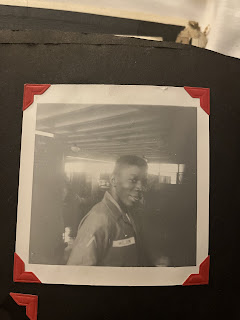There's No "There" There
Other after all the hysteria, the word being used ironically and tongue-in-cheek here, within the academic world was over did I finally read Tommy Orange’s There There. And as it happened, the hysteria was well warranted. I ended up raving about the novel for two days after finishing it, talking to almost anyone who would listen. Each story line for Orange's myriad of Oakland-born and bred, Native American characters, more than just those listed on the first page, while occasionally confusing, was none-the-less intriguing. They draw you in and make you want to know more.
If you’re not ready for spoilers, you should stop reading, because here they come.
My favorite character was Jacquie Red Feather. Her struggle, her story, her development, how far she’d come and what she was working towards were constantly pulling you in. After reading about her initial experience with Harvey, I thought, “Good riddance.” Then she ran into him decades later, as an adult. A totally different person. Capable of being sorry and realizing what he’d done and what he’d done to her and what his actions had caused as a result. And I found myself rooting for him. For them. After which I was immediately irritated with myself. Rooting for the relationship between a man who sexually assaulted a 16 yr old girl on an island (this is not giving all the context by any means, merely an macro-level overview)?? I would never. And yet, I had to check myself from doing so, more than once. Jacquie Red Feather, Opal Viola Victoria Bear Shield, Harvey, Daniel, Blue, Edwin Black, they were so vividly described I can see them just thinking about it. I did appreciate the depth most characters received within their own respective narratives. Even when others were getting focus or attention, Orange made sure you did not lose track of who and what we were talking about. Even though once I got everyone’s names straight, I had to go back and make connections at least 3 times. That’s how many characters there were. But they were worth it.
Characters were also given something of a ranking which I liked. More important characters got more story line while less got less and so on. It didn’t help or hurt the story except that one seemingly insignificant character gets the opening and closing narratives. I did like Tony Loneman but I wanted to know more about him, the way I knew more about everyone else.
But I think that’s what Orange’s purpose was. Not only to craft an interesting read, but to depict a fascinating world of characters that made you think more deeply about your ties and connection to Native Americans and all they’ve been through at the hands of settler colonialism. Generations can be betrayed and affected far beyond the present. As I’ve said before, we’re not here to compete in the Persecution Olympics, but it is certainly important to consider the lives of others and their struggles with some liberties the rest of us take for granted. Every struggle, every problem, may not be an issue for everyone. All of it is relative. But everyone deserves to be believed, to be heard, to have their histories respected.
I did really appreciate the forthright presentation of Native history, corrections, and facts as well as the bald truth being told, no matter how gray it might be. Because life isn’t always black and white and clear cut.
I'll leave you with an excerpt that shows not only what gentrification can do but also how important emphasis can be:
"...he'd looked up the quote in its original context, in her Everybody's Autobiography, and found that she was talking about how the place where she'd grown up in Oakland had changed so much, that so much development had happened there, that the there of her childhood, the there there, was gone, there was no there there anymore. ... The quote is important to Dene. This there there. He hadn't read Gertrude Stein beyond the quote. But for Native people in this country, all over the Americas, it's been developed over, buried ancestral land, glass and concrete and wire and steel, unreturnable covered memory. There is no there there" (38-39).
 |
| Cover art |

Comments
Post a Comment